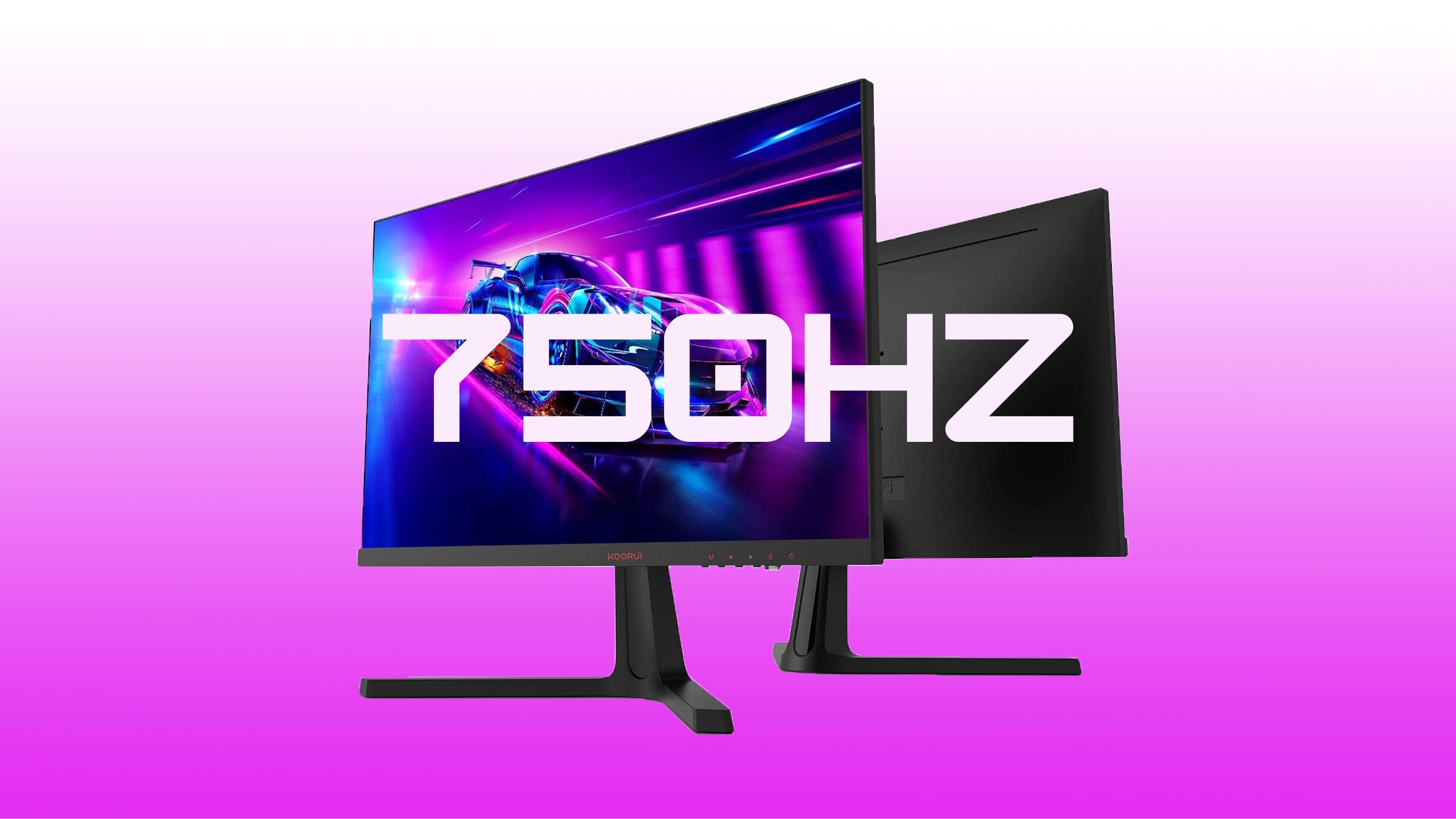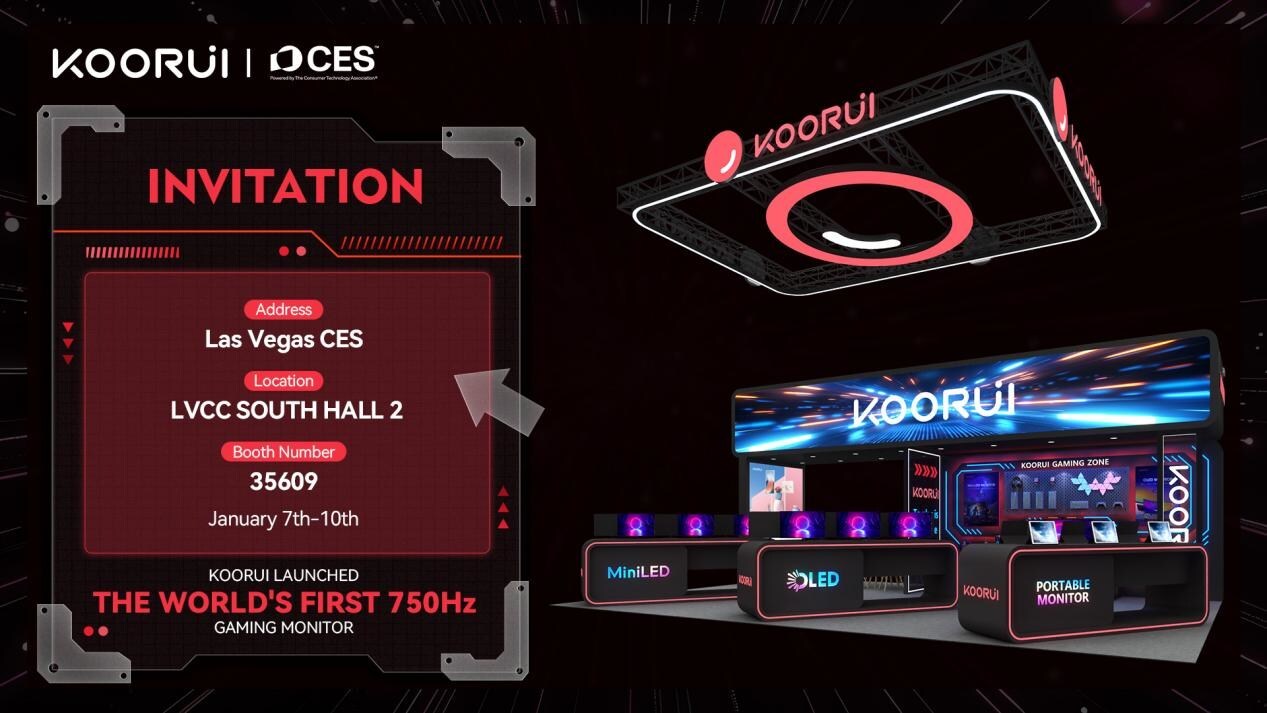Koorui to demo the 'world's first' 750 Hz gaming monitor at CES — TN panel device gets welcome color boost with the latest QD film

Chinese display manufacturer Koorui has announced the world's first gaming monitor featuring a 750 Hz refresh rate. The Koorui G7 is a 24.5-inch Full HD (1920x1080) monitor that is set to debut at CES 2025, with mass production planned for later in the year.
The display utilizes a TN (Twisted Nematic) panel enhanced with Quantum Dot technology and is claimed to deliver a 0.5ms (GtG) response time and 95% coverage of the DCI-P3 color gamut. It also supports HDR400, aiming to provide vibrant visuals alongside its ultra-high refresh rate. Notably, this development comes shortly after MSI and BenQ announced their very first 600 Hz gaming monitors, positioning Koorui at the forefront of the high-refresh-rate display technology race.

The G7's 750 Hz refresh rate is designed to offer unmatched visual fluidity, particularly beneficial in fast-paced esports titles where every frame and millisecond counts. However, the practical benefits of such a high refresh rate may be limited by current hardware capabilities. Achieving frame rates that fully utilize a 750 Hz refresh rate requires exceptionally powerful systems, and the perceptual difference between 500 Hz and 750 Hz may be negligible for most users. Therefore, the G7 is likely to appeal primarily to a very niche category of professional esports players and enthusiasts seeking the latest advancements in gaming technology.
In terms of ergonomics, the G7 will offer adjustable height, tilt, and swivel options to accommodate various user preferences. It will also incorporate low blue light and flicker-free technologies to reduce eye strain during extended gaming sessions. Connectivity options include three HDMI 2.1 ports, a DisplayPort 1.4, and a 3.5mm headphone jack.
While the G7's 750 Hz refresh rate sets a new industry benchmark, its real-world applicability remains to be fully assessed. As the monitor enters mass production and becomes available globally, it will be interesting to see how both the gaming community and hardware manufacturers respond to this leap in refresh rate technology - and any pricing premium.
Koorui will be showcasing its new monitor at CES 2025, and is expected to provide demos, plus more information on the pricing and availability.
Get Tom's Hardware's best news and in-depth reviews, straight to your inbox.

Kunal Khullar is a contributing writer at Tom’s Hardware. He is a long time technology journalist and reviewer specializing in PC components and peripherals, and welcomes any and every question around building a PC.
-
nimbulan A QD-TN monitor is something I never expected to see. I'm really curious to read reviews and see how it stacks up.Reply -
DougMcC 500 hz = 2 ms / frameReply
750hz = 1.33 ms / frame
So that's a potentially 0.67 ms latency advantage. Not much, but not immaterial either. -
bit_user Aren't TN panels usually 6-bit (native)? While FRC would go a long way at 750 Hz, I do wonder about its native precision. Gamut is only one piece of the puzzle.Reply
Contrast ratio would be another key aspect to look at. -
kyzarvs I have 144hz and 75hz monitors on my gaming machine. I've tested and tried multiple times, I can't tell the difference. 30->60 I totally see it. 60->75, yes a noticable difference. 75+? When I'm actually playing and not studying the screen for a difference, nah. I'd much rather have all the eye-candy turned on myself, I do not see the point in these screens. I do not believe that 2ms vs 1.33ms for a 500-750hz screen gives a competitive advantage in the realms of human response time.Reply -
bit_user Reply
I think it depends on a few things, like your monitor's response rate and what kind of content you're looking at. When your eyes are tracking fast moving objects on screen, the framerate makes a bigger difference than for slower movement/changes frame-to-frame.kyzarvs said:a noticable difference. 75+? When I'm actually playing and not studying the screen for a difference, nah.
The only argument for the latency savings of high framerate displays is for players at the most elite level. If you take two pro gamers of equal skill and one has a setup with a couple milliseconds less latency, then it could conceivably give that player a slight edge. However, if there's a significant difference in abilities, a couple ms of difference in latency is unlikely to change outcomes.kyzarvs said:I do not believe that 2ms vs 1.33ms for a 500-750hz screen gives a competitive advantage in the realms of human response time. -
Notton I can notice a difference between 75Hz and 144Hz.Reply
I have tried up to 180Hz, but I have a hard time seeing a difference above 120fps.
Of course, I haven't seen a 750Hz, so maybe it would be noticeable if it pumps 6x the frames.
Yeah, I'm a little curious about this too.bit_user said:Aren't TN panels usually 6-bit (native)? While FRC would go a long way at 750 Hz, I do wonder about its native precision. Gamut is only one piece of the puzzle.
Contrast ratio would be another key aspect to look at.
With 1080p, 750Hz, 8-bit, it'll push 59.36Gbps of bandwidth, and only DP2.1 will display that without DSC.
Even at 6-bit, it's still pushing 44.52Gbps of bandwidth.
For reference
DP1.4= 25.92Gbps
HDMI2.1= 42.57Gbps
It might look fine with an HDMI 2.1 connection, but that high compression ratio on DP 1.4 is a little worrying for image quality.
And then there is the cable length/data integrity issue... -
bit_user Reply
I'm not aware of DP or HDMI supporting only 6 bits per sample. I was talking about the underlying panel technology.Notton said:Yeah, I'm a little curious about this too.
With 1080p, 750Hz, 8-bit, it'll push 59.36Gbps of bandwidth, and only DP2.1 will display that without DSC.
Even at 6-bit, it's still pushing 44.52Gbps of bandwidth.
FWIW, displayspecifications.com has an extensive database of monitor specs. They separately list the interface bit depth from the panel bit depth.
Using HBR3, DisplayPort 1.3 and 1.4 can hit 32.4 Gb/s. It's annoyingly hard to find out which monitors support HBR3, unless they specifically advertise it. By now, I think most high-end DP 1.4 monitors do.Notton said:For reference
DP1.4= 25.92Gbps
HDMI2.1= 42.57Gbps
It might look fine with an HDMI 2.1 connection, but that high compression ratio on DP 1.4 is a little worrying for image quality.
And then there is the cable length/data integrity issue...